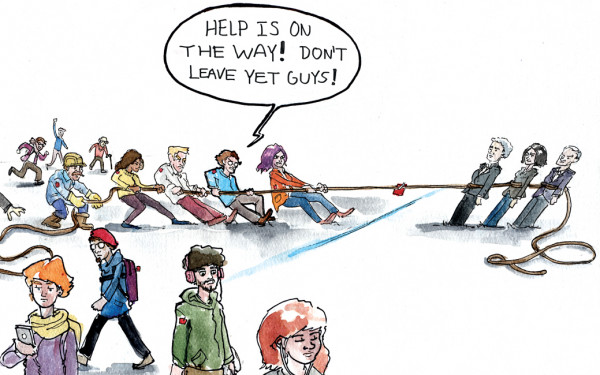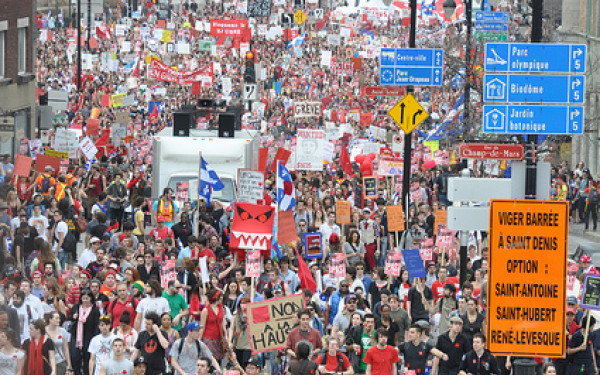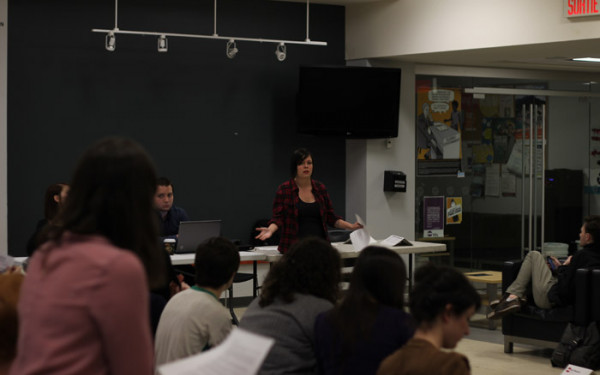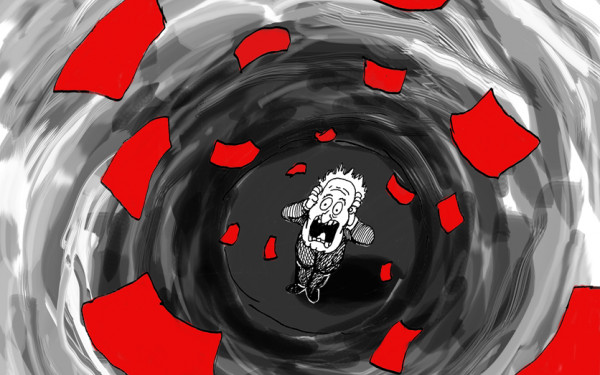I Like My Protests Like I Like My Cheese: Cubed
Printemps CUBEcois Creates an Environment from Artifacts of the Student Movement
Printemps CUBEcois is a large public art installation created from artifacts of the 2012 student protests that rocked Quebec, presented by artist David Widgington and the CSU. Built over two days with a wood frame and covered in canvas, the cube is a collection of posters, banners, signs, stencils, and videos compiled in an archive of over 3,000 artifacts by Widgington.
This is the second time that Printemps CUBEcois is being presented at Concordia. The project was conceived and realized by Widgington as part of the Hemispheric Institute of Performance and Politics’s conference Encuentro at Concordia this summer. The CSU encouraged Widgington to reinstall the project in the EV building atrium for the course of the past week so that more students would have an opportunity to engage with the piece.
Using artifacts collected as part of his graduate research studies in media at Concordia, Widgington updated the installation to reflect concern with other social justice issues beyond the student strike. The exterior of the cube was covered with donated and loaned banners from various student organizations, but the interior had materials from other social movements.
Widgington explains the artistic vision for his work as the application of performance theory to his archive work. Printemps CUBEcois is a metaphor for the debriefing stage of oppositional performance, which seeks to reaggregate components of the performance, review them, and make adjustments before performing again.
“By using artifacts that were created and used during the performance phase within the debriefing phase, it helps nourish the opposition that was so active during that time,” he said. “The outside of the cube is to inspire, and the inside is to make links between the active opposition [of the printemps québécois] and how it is needed for other struggles now.”
A large, complicated collage with many political themes took up one interior wall of the cube. Widgington calls this portion Pièce de résistance and describes it as a representation of the student strikes from his perspective. It was printed at Concordia and featured videos projected onto the canvas, which truly made Printemps CUBEcois into a multimedia production, and not just a sculpture.
“This is a living archive because some of these banners will be reused on the streets again. It’s not dead material, it’s a still living thing,” Widgington said.
While the installation is no longer in the EV atrium, digitized artifacts from the installation can be accessed at Widgington’s website, www.printempserable.net..





